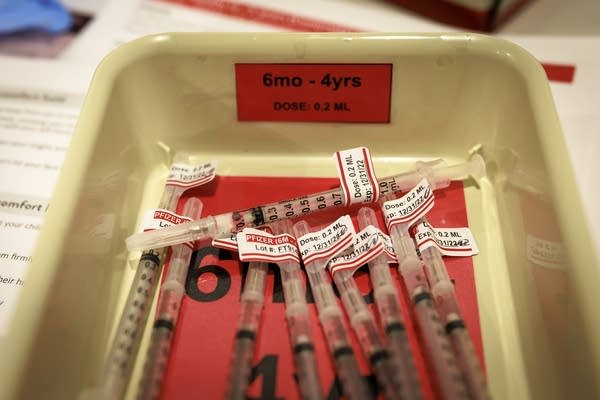So far, Minnesota avoids recent national uptick in COVID cases

Syringes containing the COVID-19 vaccination for 6-month-olds to 4-year-olds lay on a table at the Mall of America vaccination on June 22.
Kerem Yücel | MPR News
Go Deeper.
Create an account or log in to save stories.
Like this?
Thanks for liking this story! We have added it to a list of your favorite stories.


